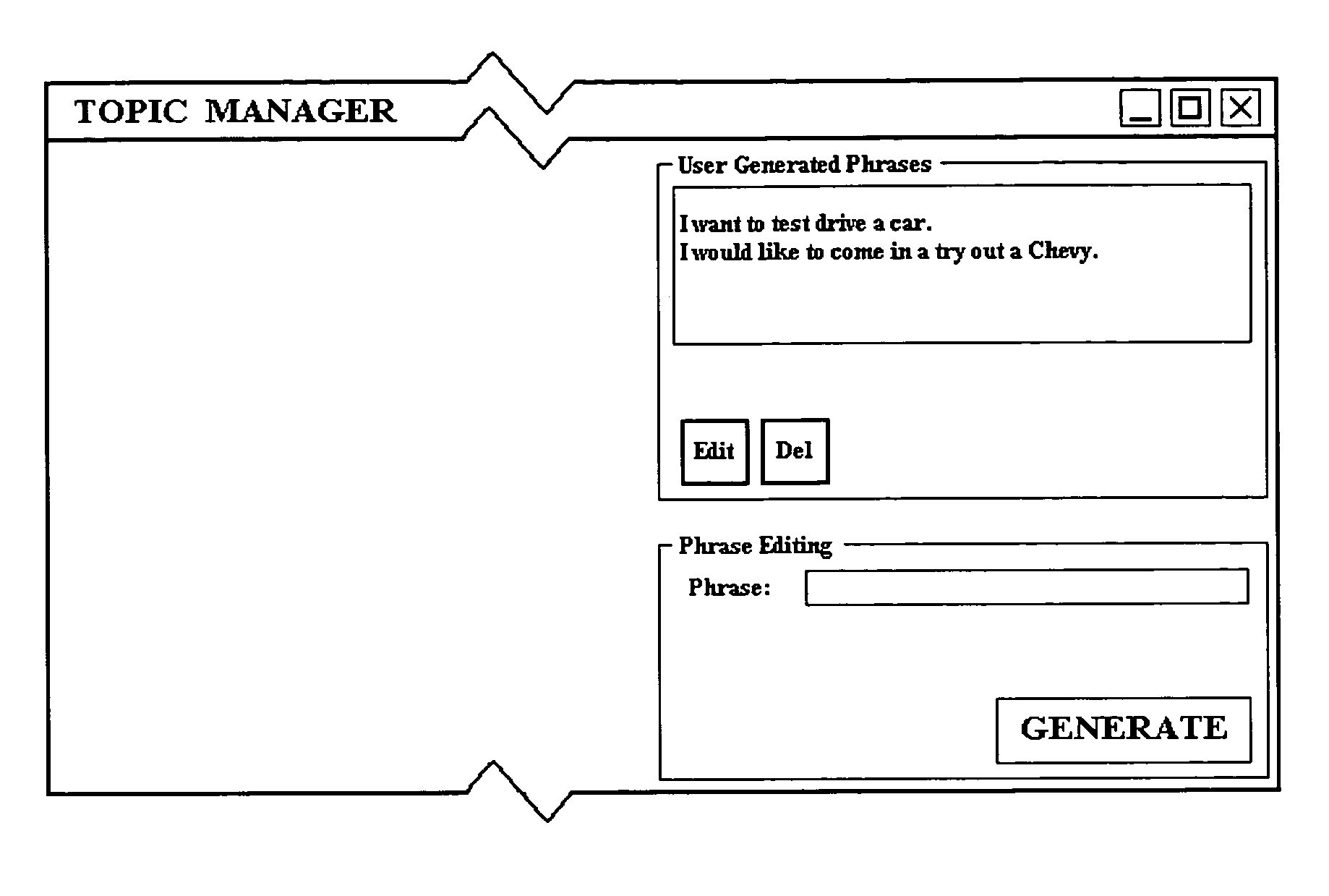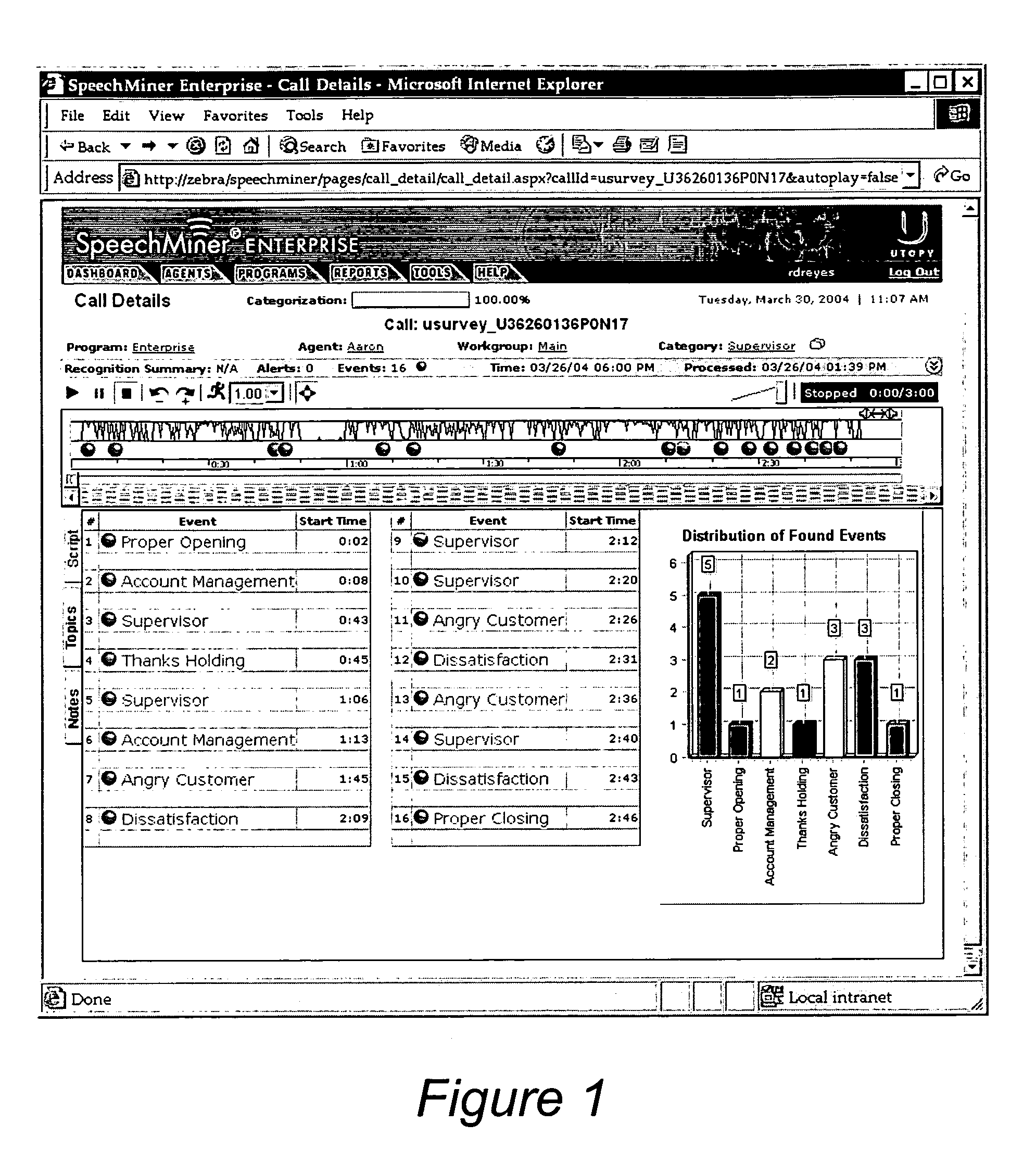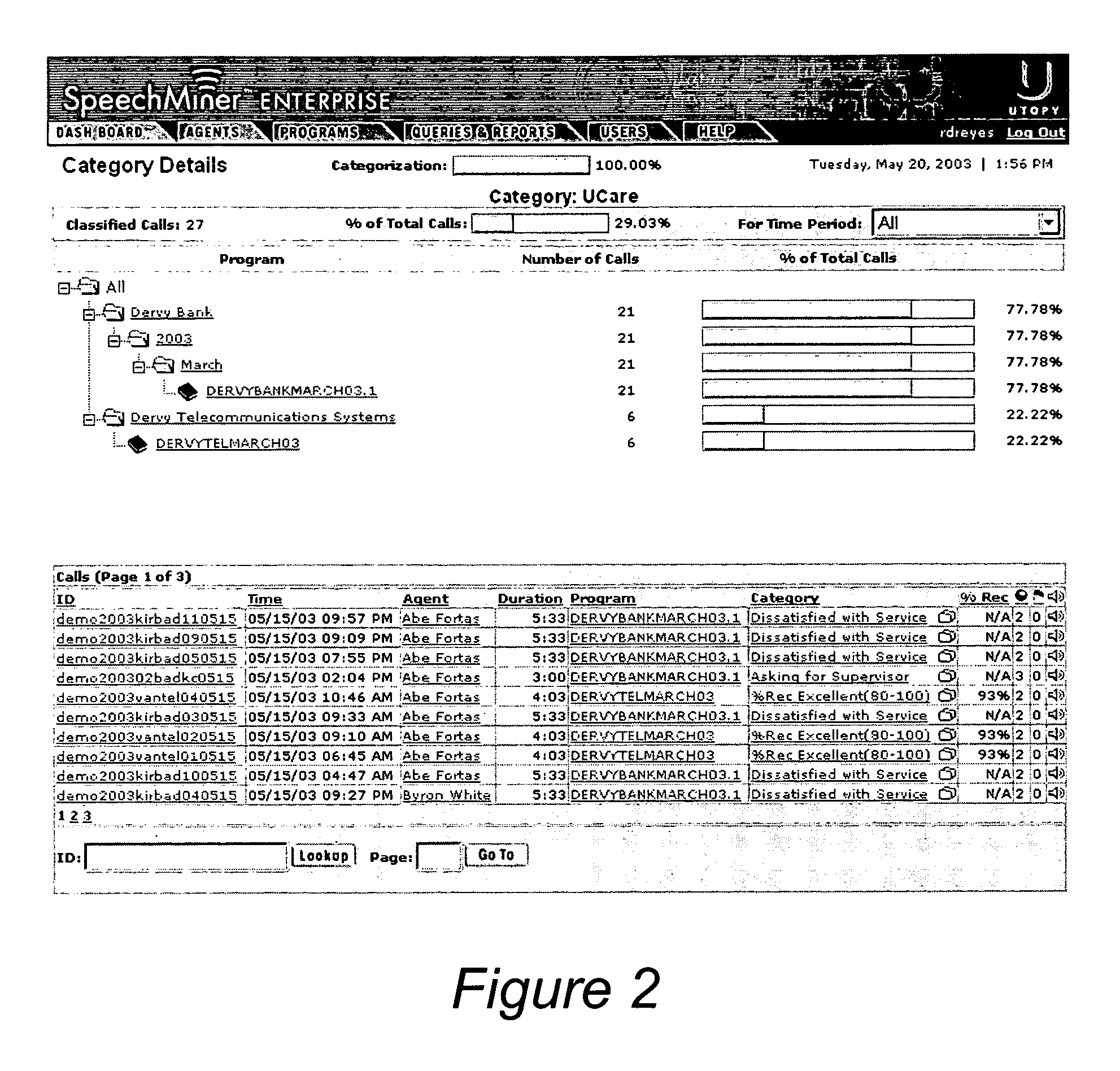System and method of call classification with context modeling based on composite words
- Summary
- Abstract
- Description
- Claims
- Application Information
AI Technical Summary
Benefits of technology
Problems solved by technology
Method used
Image
Examples
Embodiment Construction
Definitions
[0032]Audio Features—extractable non-linguistic features that are not related to the linguistic content of the conversation, for example, speaker turn changes, pitch modulation, type of channel, signal-to-noise ratio (SNR), silence, and predefined tones such as question, sarcasm, and disbelief.[0033]Category—a class, type, kind, sort, group, or the like defined by a list of words or phrases, audio features, and a set of rules. A category can have a logical relationship with another category. For example, the category of “angry customer” could be a sub-category of the “dissatisfied customer” category and / or a super-category of the “suing customer” category.[0034]Category Prior—refers to the relative size of a category to the size of the entire domain, or the percentage of all, for example, calls, conversations, live streams, files, and the likes, from the entire domain that are related to the category.[0035]Classification Rules—a list of decision-making rules on whether a ...
PUM
 Login to View More
Login to View More Abstract
Description
Claims
Application Information
 Login to View More
Login to View More - R&D
- Intellectual Property
- Life Sciences
- Materials
- Tech Scout
- Unparalleled Data Quality
- Higher Quality Content
- 60% Fewer Hallucinations
Browse by: Latest US Patents, China's latest patents, Technical Efficacy Thesaurus, Application Domain, Technology Topic, Popular Technical Reports.
© 2025 PatSnap. All rights reserved.Legal|Privacy policy|Modern Slavery Act Transparency Statement|Sitemap|About US| Contact US: help@patsnap.com



